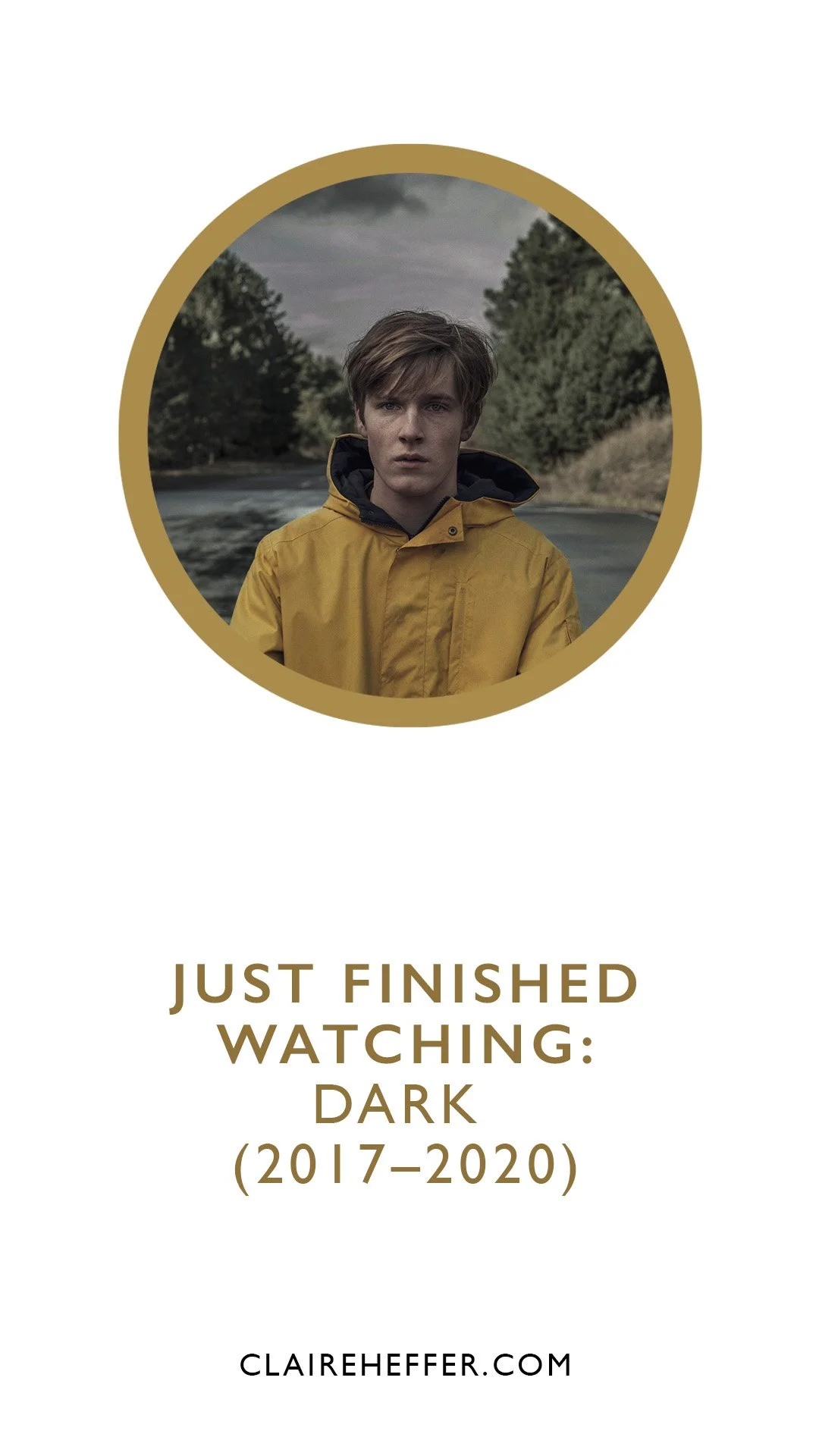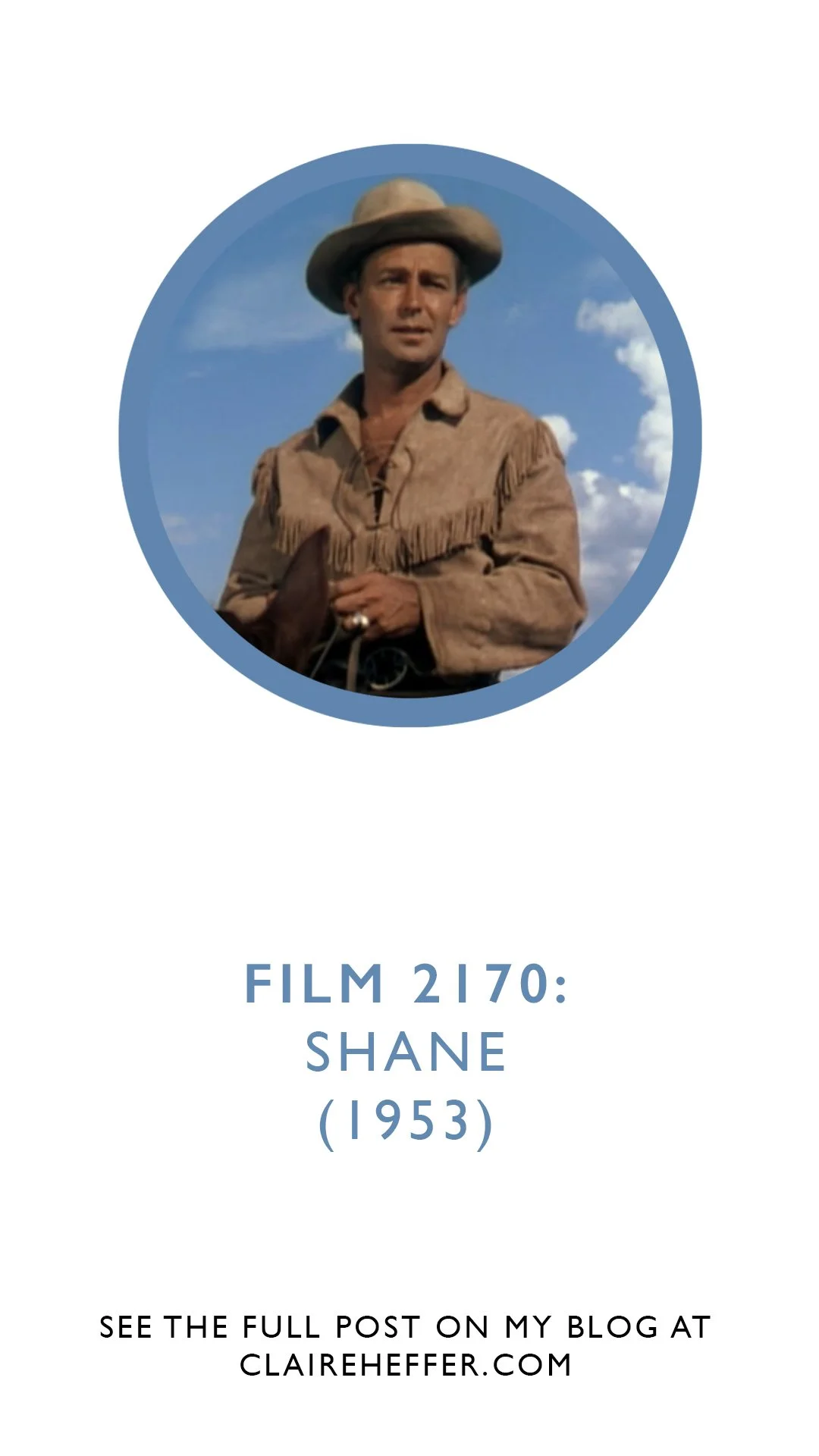FILM 2170: SHANE (1953)
FILM 2170: SHANE (1953)
TRIVIA: The film was completed in 1951 but George Stevens' editing process was so rigorous that it wasn't released until 1953. This drove up the costs of what should have been a simple, straightforward Western; in fact, they spiraled so much that Paramount approached Howard Hughes about taking on the property, but he declined. He changed his mind when he saw a rough cut and offered to buy the film on the spot. This made Paramount rethink its strategy--originally it was going to release it as a "B" picture but then decided it should be one of the studio's flagship films of the year. This proved to be a good decision, as the film was a major success and easily recouped its inflated budget.
In the funeral scene, the dog consistently refused to look into the grave. Finally, director George Stevens had the dog's trainer lie down in the bottom of the grave, and the dog played his part ably. The coffin (loaded with rocks for appropriate effect) was then lowered into the grave, but when the harmonica player began to play "Dixie" spontaneously, the crew was so moved by the scene that they began shoveling dirt into the grave before remembering the dog's trainer was still there.
George Stevens originally cast Montgomery Clift as Shane and William Holden as Joe Starrett. When both decided to do other films instead, "Shane" was nearly abandoned before Stevens asked studio head Y. Frank Freeman who was available. Upon seeing a list of actors under contract to the studio, Stevens cast Alan Ladd, Van Heflin and Jean Arthurwithin three minutes.
Jack Palance had problems with his horse during filming. When Shane and Jack first look each other over at the Starrett Ranch, Palance was supposed to dismount for a minute, then remount his horse. He could not remount, so the director had Jack dismount his horse slowly, then ran the film in reverse for the remount.
Meticulous care was taken at all levels of production. All the physical props were true to the period, the buildings were built to the specifications of the time and the clothing was completely authentic. Director George Stevens even had somewhat scrawny-looking cattle imported from other areas, as the local herds looked too well-fed and healthy.
The first gunshots in the film are when Shane shows Joey how to fire a revolver. To enhance the dramatic effect of the shooting, the sounds of the gunshots were elevated by firing a gun into a garbage pail. The echoed reverberations made the gunfire sounds much louder. George Stevens' intention was to startle the audience with the first firing of a gun.
Alan Ladd was only 5'7", and this had to be compensated for. When he is in scenes with Van Heflin the two are about the same height, although Heflin was far taller. When Ladd is shown with Jean Arthur he is perhaps a bit taller than she. When Heflin is shown with her, Heflin is far taller than she.
In 2007, the American Film Institute ranked this as the #45 Greatest Movie of All Time.
Jean Arthur, a committed animal lover, took it upon herself to personally inspect the conditions that the film's roster of livestock were being kept in. If they weren't up to her satisfaction, she would ensure that the matter was rectified.
Exterior scenes were filmed with telephoto lenses in order to make the surrounding mountains a looming presence.
In the scene when Shane first enters the bar, he answers a question from Chris with "you speakin' to me" to which he gets a reply from Chris "I don't see nobody else standin' there" - very much an influence for dialogue used by Robert De Niro in Taxi Driver (1976).
This was one of the first films to attempt to re-create the overwhelming sound of gunfire. Warren Beatty cited this aspect of as inspiration during the filming of Bonnie and Clyde(1967).
The film is included on Roger Ebert's "Great Movies" list.
The movie's line "Come back, Shane!" was voted as the #69 of "The 100 Greatest Movie Lines" by Premiere in 2007.
Included among the "1001 Movies You Must See Before You Die", edited by Steven Schneider.
I’m making my way through the book "1001 Movies You Must See Before You Die", edited by Steven Schneider. See my blog post about my copy of the book here…
You can buy an updated version (which I will get after I’ve made my way through this edition) here…
I really hope you can come on this journey with me – if you do I’d love to know which films you’ve enjoyed the most!
Watch this here…
This is featured on the podcast Unspooled Episode #110
Also featured on the podcast I Saw What You Did Don’t Get Shaned

















